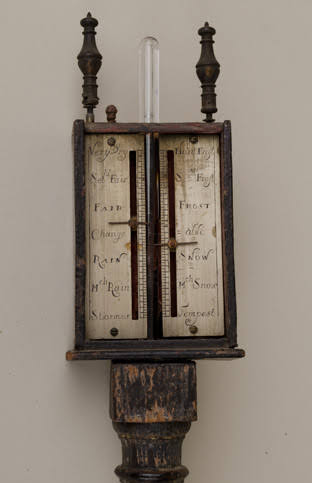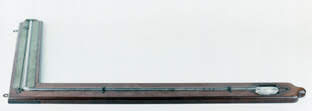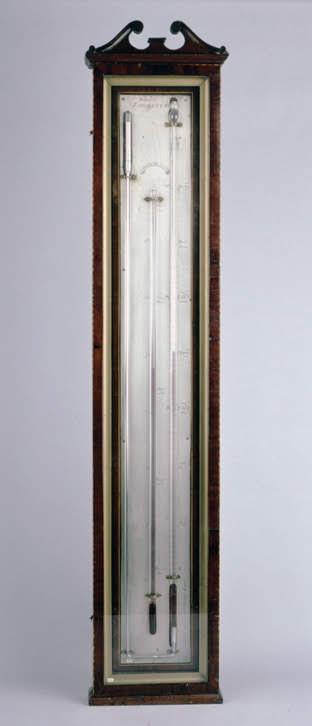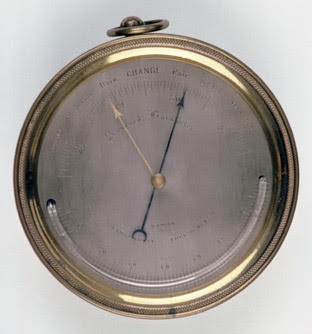In 1695 Daniel Quare secured the first patent for a portable barometer. Quare's design was sealed, to prevent spillage of mercury, and it used a cistern to provide a mechanism for adjusting the volume of the mercury in the barometer tube (Image 1).
However, The Clockmaker's Company originally opposed Quare's patent, claiming that Joachim d'Alsace had published a description of a similar design in 1688 and that the English clock-maker Thomas Tompion had already produced such as barometer. Nevertheless, Quare was granted the patent and began manufacturing the design.
His cistern barometer consisted of a sealed hollow cylinder of boxwood - a material pervious to air along the grain yet impervious to mercury. At the bottom of the cistern, a leather bag rested on a padded end of a screw. By adjusting the height of the screw, the leather bag could be made to inflate or deflate, thus affecting the mercury level in the tube. When the screw was advanced so that the entire tube was filled with mercury, the barometer could be turned upside-down and carried away.
Though Quare's cistern barometer improved portability and the capacity to ship the instrument without incurring damage, the short length of the barometer tube suggests that it was intended for use in a domestic rather than mountain-top setting.







